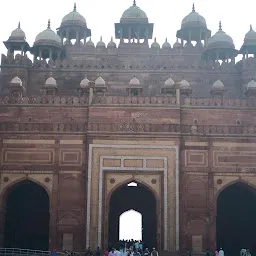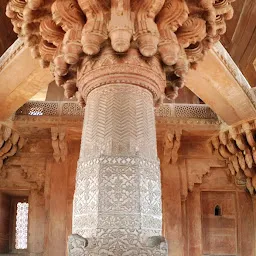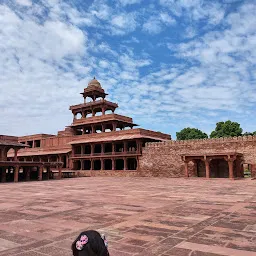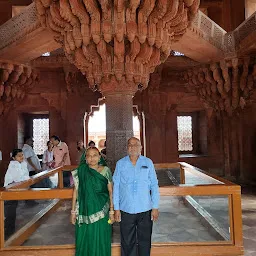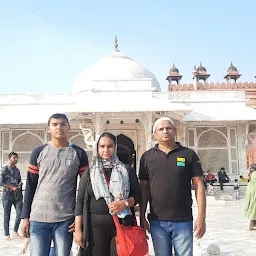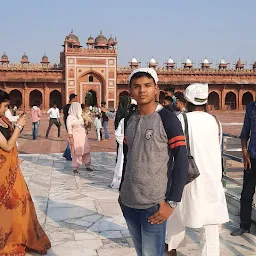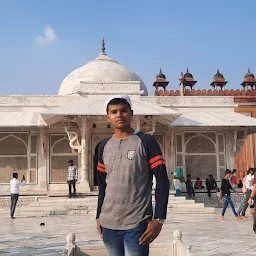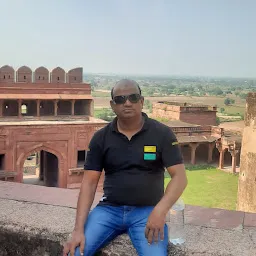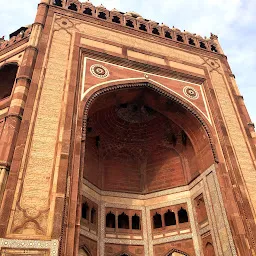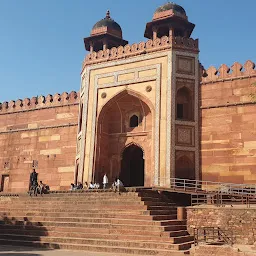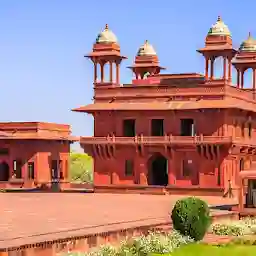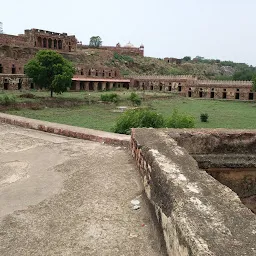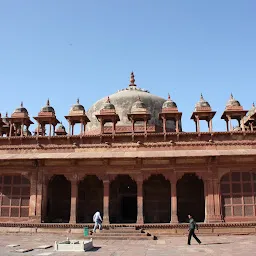Rang Mahal Fatehpur Sikri
283110, Ghanta Ghar, Fatehpur Sikri, Uttar Pradesh 283110, IndiaRang Mahal Fatehpur Sikri is a historical landmark and tourist attraction located in Fatehpur Sikri, Uttar Pradesh. The average rating of this place is 4.10 out of 5 stars based on 25 reviews. The street address of this place is 283110, Ghanta Ghar, Fatehpur Sikri, Uttar Pradesh 283110, India. It is about 0.39 kilometers away from the Fatehpur-sik railway station.
- Where is Rang Mahal Fatehpur Sikri located?
- Rang Mahal Fatehpur Sikri is located at 283110, Ghanta Ghar, Fatehpur Sikri, Uttar Pradesh 283110, India.
- What is the nearest railway station from Rang Mahal Fatehpur Sikri?
- Fatehpur-sik railway station is the nearest railway station to Rang Mahal Fatehpur Sikri. It is nearly 0.39 kilometers away from it.
Onkar Puri 13 months ago
Dually well maintained ambience and convince by the UP State Government including parks and gardens, Cleanliness in entire courtroom, premises hygienic maintained, courteous staff, parking arrangements with well connected dedicated bus service for tourist comfort.
Riya Chauhan 17 months ago
Beware of SCAMMERS!!
It is a very red stone monument of Rajasthan. The art is a unique kind you will definitely enjoy being there of you are art lover. The carvings on walls just amazing????????
Vikas Mantri 15 months ago
Fatehpur Sikri is located in Agra District in the State of Uttar Pradesh in northern India. It was constructed southeast of an artificial lake, on the slopping levels of the outcrops of the Vindhyan hill ranges. Known as the “city of victory”, it was made capital by the Mughal emperor Akbar (r. 1556-1605 CE) and constructed between 1571 and 1573. Fatehpur Sikri was the first planned city of the Mughals to be marked by magnificent administrative, residential, and religious buildings comprised of palaces, public buildings, mosques, and living areas for the court, the army, the servants of the king and an entire city. Upon moving the capital to Lahore in 1585, Fatehpur Sikri remained as an area for temporary visits by the Mughal emperors.
The inscribed property covers 60.735 ha, with a buffer zone of 475.542 ha. The city, which is bounded on three sides by a wall 6 km long fortified by towers and pierced by nine gates, includes a number of impressive edifices of secular and religious nature that exhibit a fusion of prolific and versatile Indo-Islamic styles. The city was originally rectangular in plan, with a grid pattern of roads and by-lanes which cut at right angles, and featured an efficient drainage and water management system. The well-defined administrative block, royal palaces, and Jama Masjid are located in the centre of the city. The buildings are constructed in red sandstone with little use of marble. Diwan-i-Am (Hall of Public Audience) is encircled by a series of porticos broken up at the west by the insertion of the emperor’s seat in the form of a small raised chamber separated by perforated stone screens and provided with pitched stone roof. This chamber communicates directly with the imperial palace complex clustered along a vast court. At the north side of it stands a building popularly known as Diwan-i-Khas (Hall of Private Audience), also known as the ‘Jewel House’. Other monuments of exceptional quality are Panch Mahal, an extraordinary, entirely columnar five-storey structure disposed asymmetrically on the pattern of a Persian badgir, or wind-catcher tower; the pavilion of Turkish Sultana; Anup Talao (Peerless Pool); Diwan-Khana-i-Khas and Khwabgah (Sleeping Chamber); palace of Jodha Bai, the largest building of the residential complex, which has richly carved interior pillars, balconies, perforated stone windows, and an azure-blue ribbed roof on the north and south sides; Birbal’s House; and the Caravan Sarai, Haram Sara, baths, water works, stables and Hiran tower. Architecturally, the buildings are a beautiful amalgamation of indigenous and Persian styles.
Amongst the religious monuments at Fatehpur Sikri, Jama Masjid is the earliest building constructed on the summit of the ridge, completed in 1571-72. This mosque incorporates the tomb of Saikh Salim Chisti, an extraordinary masterpiece of sculpted decoration completed in 1580-81 and further embellished under the reign of Jahangir in 1606. To the south of the court is an imposing structure, Buland Darwaza (Lofty Gate), with a height of 40 m, completed in 1575 to commemorate the victory of Gujarat in 1572. It is by far the greatest monumental structure of emperor Akbar’s entire reign and also one of the most perfect architectural achievements in India.
- Address
- 283110, Ghanta Ghar, Fatehpur Sikri, Uttar Pradesh 283110, India
